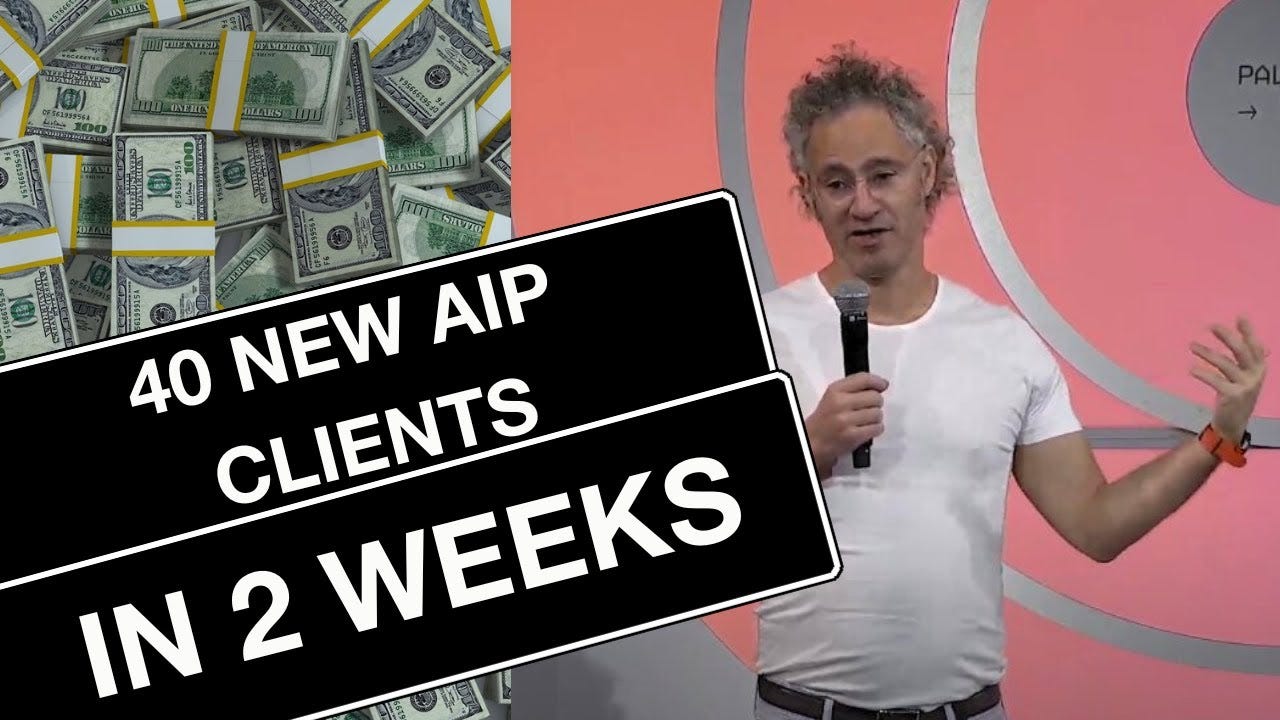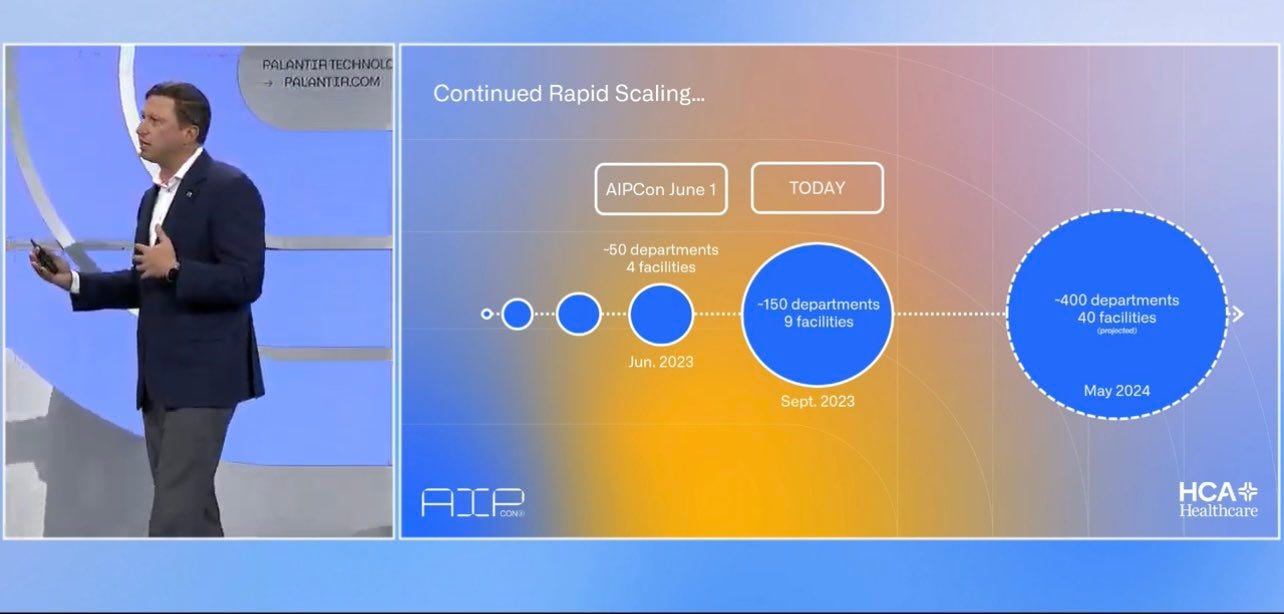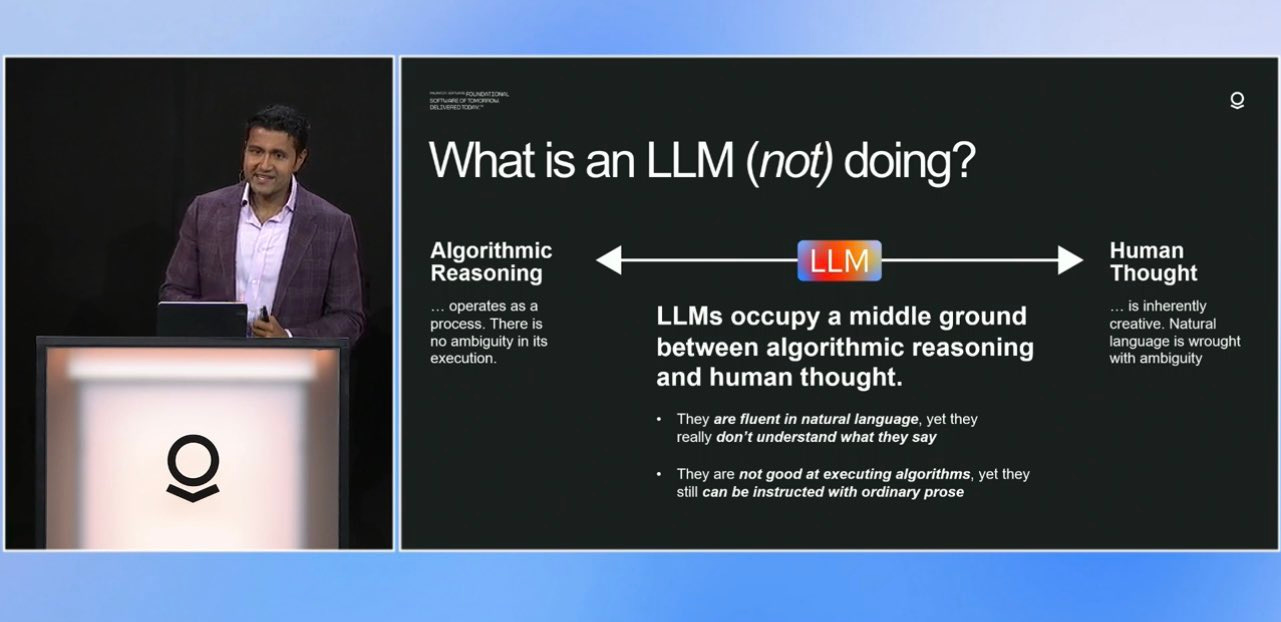Palantir hosted their 2nd AIPCon last week, and it was pretty interesting. My number one question as a shareholder was if I would see some strong evidence that AIP as a product is so unique to customers that they would end up not only using it, but paying for it happily.
The presentations I saw confirmed to me that what Palantir is building with AIP is very real, and I am even more excited to be a shareholder. If you want a video recap, you can watch this.
First off, thank you
Thank you to everyone who joined the livestream — for a while, Arny and I had more than the actual Palantir channel, which is insane to even think of. Having a community makes this process actually enjoyable, so thank you.
Palantir Introduced AIP Virtual Tables
Essentially, the goal of this product was to allow organizations to use the power of Palantir’s ontology without having to implement the entire product within their organization, allowing them broader use cases in a modularized way.
Customer Growth
AIP seems to be growing fast. August 7th was Q2 earnings and Palantir had announced 100 organizations that were currently using AIP in their businesses — a month later, we have seen 50% growth with 150 organizations now using AIP, more than 0 of them being onboarded within the last week. That type of growth is incredible and if Palantir can keep it up, there will be many companies using AIP by the end of the year, even if they haven’t monetized those clients yet.
HCA Healthcare
HCA had one of the best presentations in my opinion — truly showcasing how incredible Palantir’s AIP is within the healthcare space is. We all know healthcare is a massive vertical for the company — with the upcoming NHS decision soon — and what the HCA presentation reinforced is how integrated hospitals want to be with their data to deliver better patient care. It’s hard to not see how vital Palantir will be in the future of healthcare.
Many were arguing about the lack of revenue growth given AIP is not being monetized yet, but…
HCA Healthcare had 50 departments and 4 facilities using their $PLTR AIP product on June 1st
Today they have 150 departments and 9 facilities using it 2024 H1 goal - 400 departments and 40 facilities using $PLTR AIP
The question becomes (for all those concerned about monetization)…when AIP is in 400, or 4000 departments… How much is that worth to HCA?
And if it’s worth a lot…maybe it makes sense for Palantir to not be quickly trying to get revenue for quarterly results but let them implement the product in so many hospitals that HCA has no choice but to commit to the product and pay for it over the next decade…
Other Companies
Eaton, the multinational power management company, shared its success story. Previously grappling with an inefficient supply chain, Eaton presented how the integration of both Foundry and AIP turned the tables. The company now boasts actionable insights and streamlined operations, a testament to AIP's transformative capabilities.
CPKC, the vast railroad company covering tracks from the US to Mexico, also spotlighted its achievements with AIP. Tasked with managing a staggering 20,000-mile rail network, CPKC revealed that AIP was their chosen tool for real-time problem-solving and recommendations. Their experience underscored AIP's prowess in offering dynamic AI-driven solutions for complex infrastructures.
Furthermore, a highlight of the event was interactive sessions where attendees could ask questions directly to Palantir's technical team. These sessions demystified AIP's underlying technology and allowed businesses to better understand how they could implement it.
K-LLMS
AIP truly is AI infrastructure for the enterprise. Shyam Sankar, CTO, had a very detailed presentation explaining why this type of infrastructure is necessary. One of the core points was around adopting multiple LLMs that could synergistically be rooted within your organization’s data, without having to be beholden to only one model.
AIP is what connects the glue between multiple LLMs, your business data, and the ability to actually have algorithmic reasoning within the intersection of human thought.
Algorithms are objective in how they understand your data, LLMs connect the algorithms to the creative process of “human thought” (the reason why we all find value in LLMs) to derive an answer that immediately progresses you forward within your operational workflow. Palantir’s argument is around having multiple LLMs embedded in your enterprise via AIP to get the best possible chance of having sophisticated and meaningful answers when you ask the LLM a question.
That’s it for today - let me know what you thought about AIPCon!
This newsletter will always be free and not have paywalled content. To support the newsletter, you can either give a gift subscription or subscribe to my Patreon for $1 a month. See you tomorrow!







